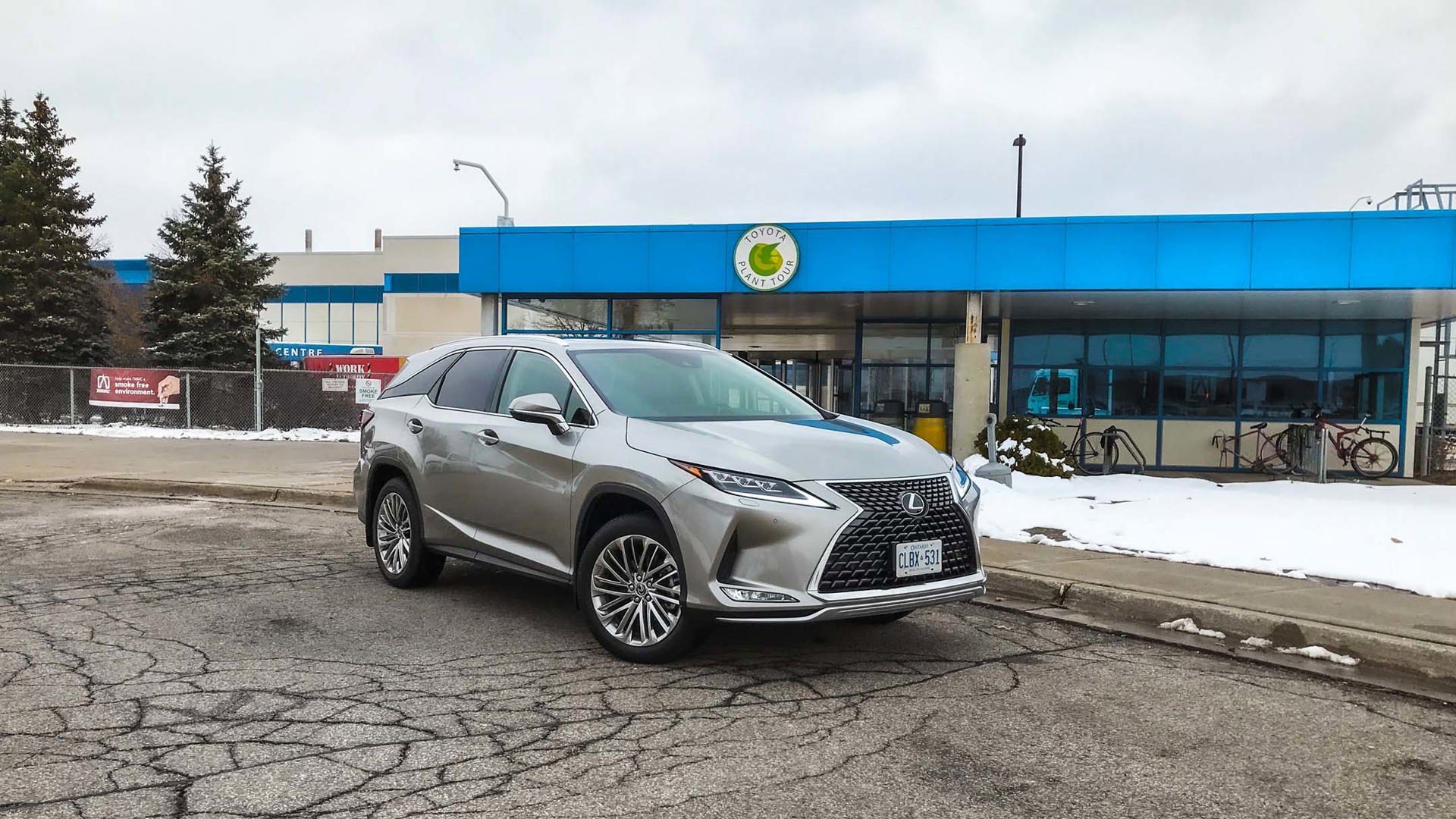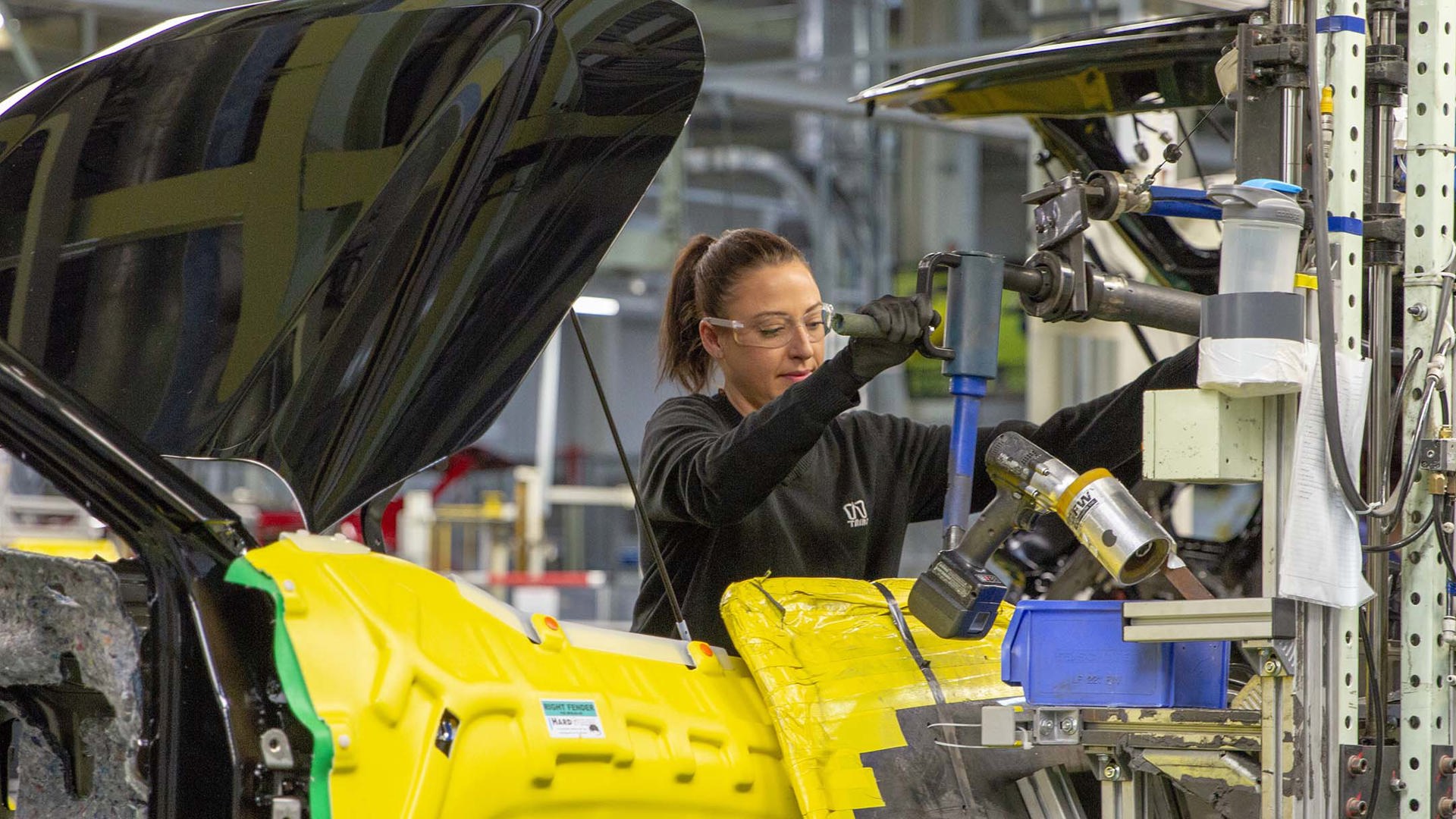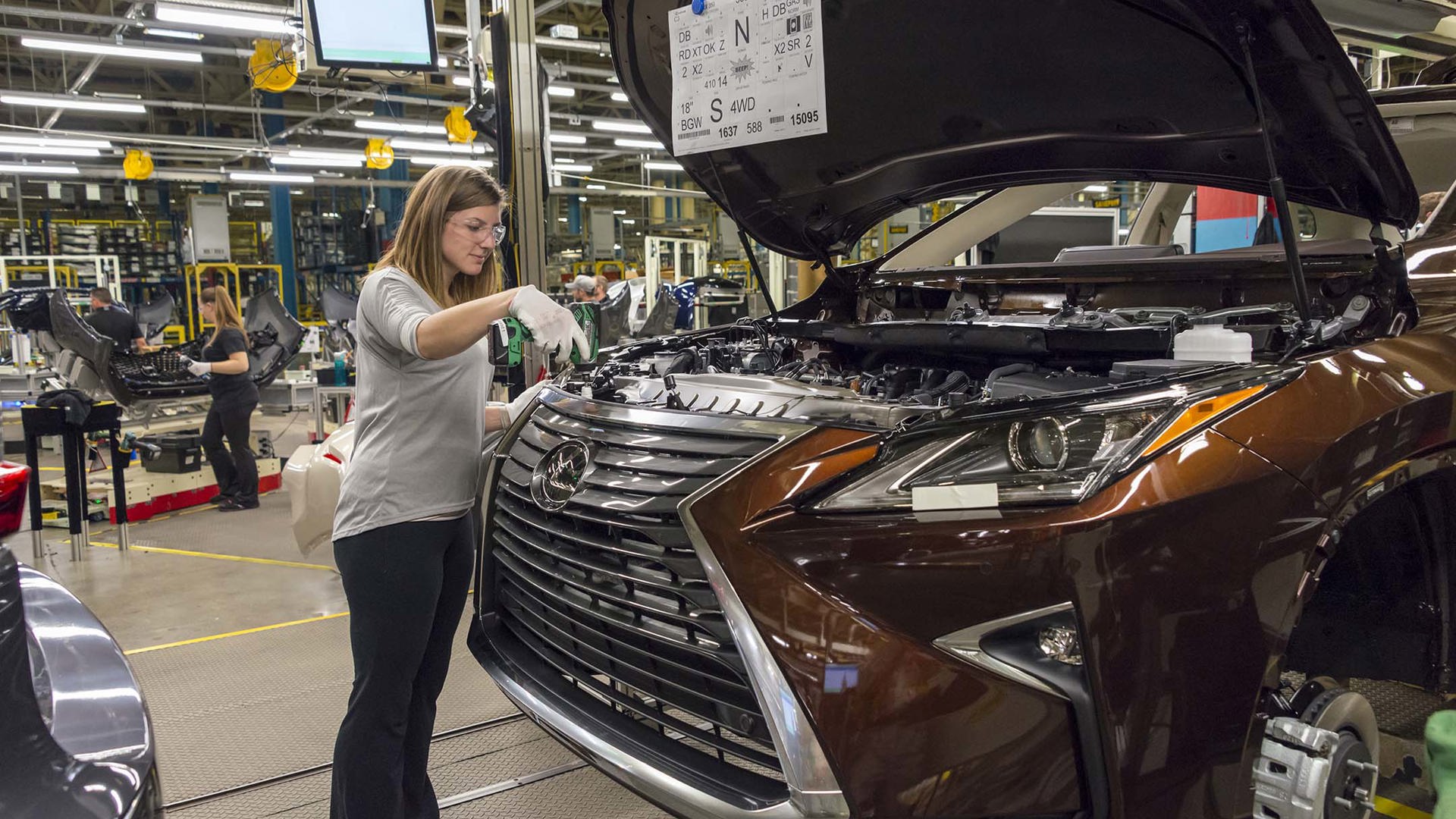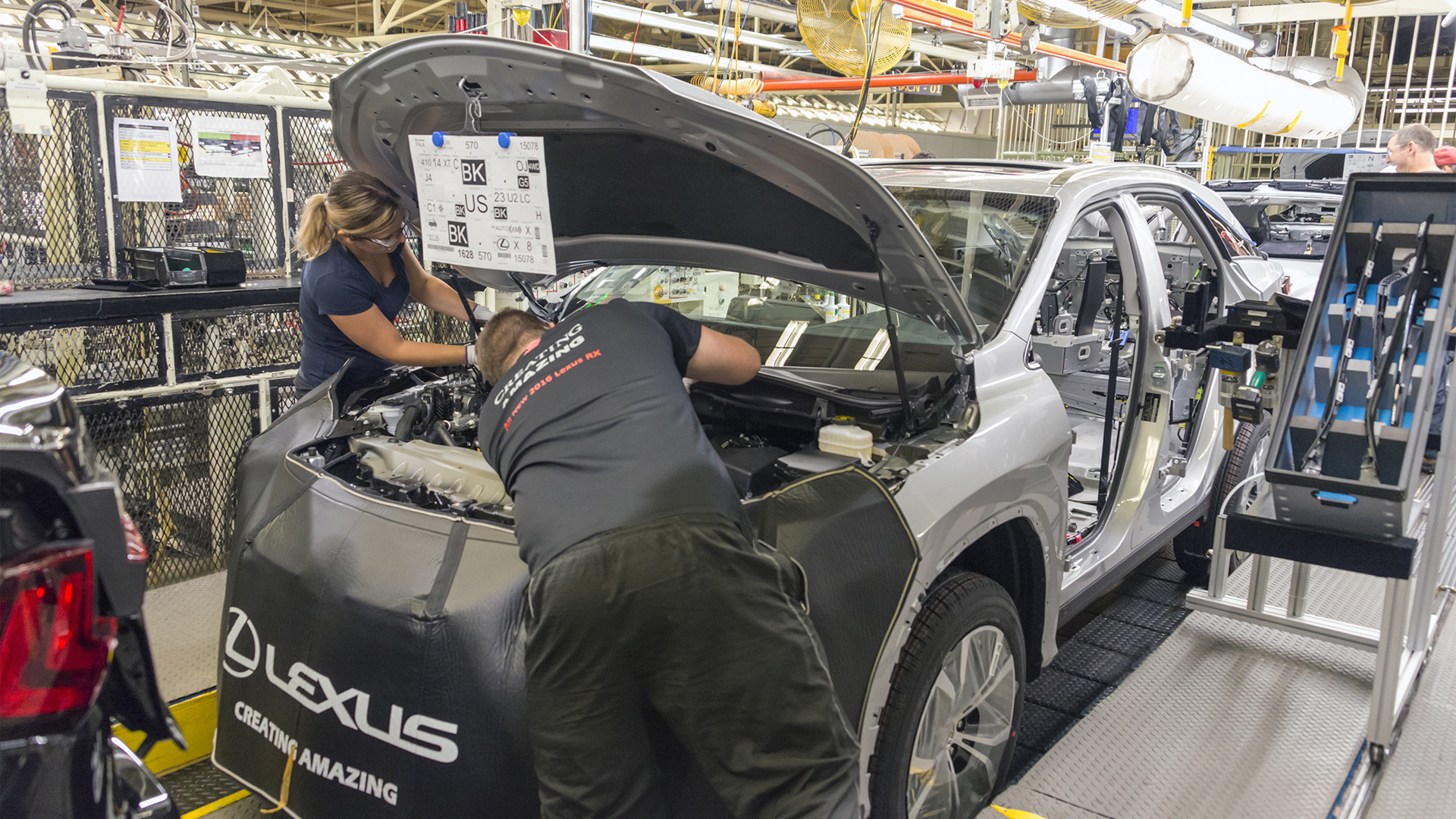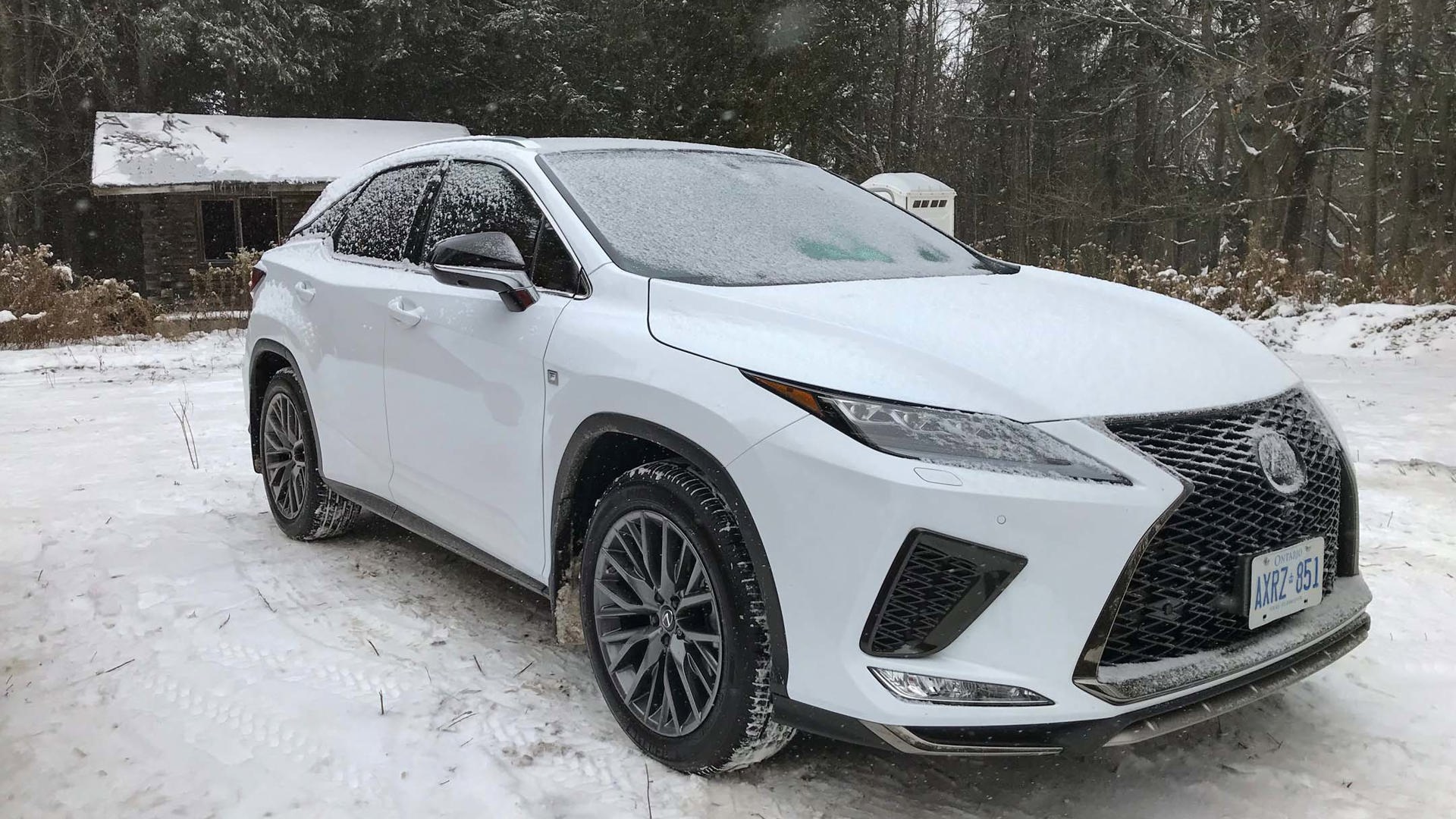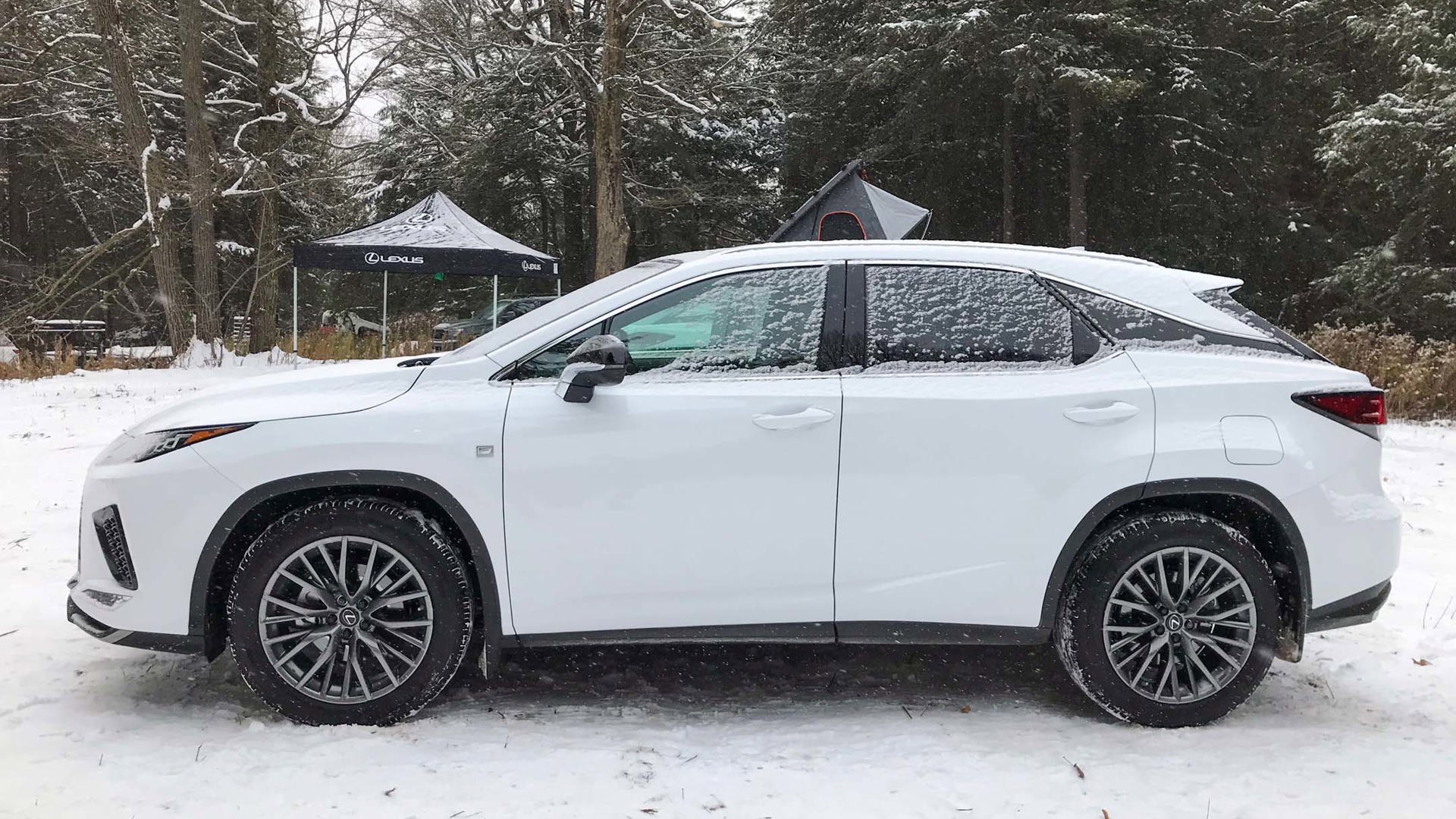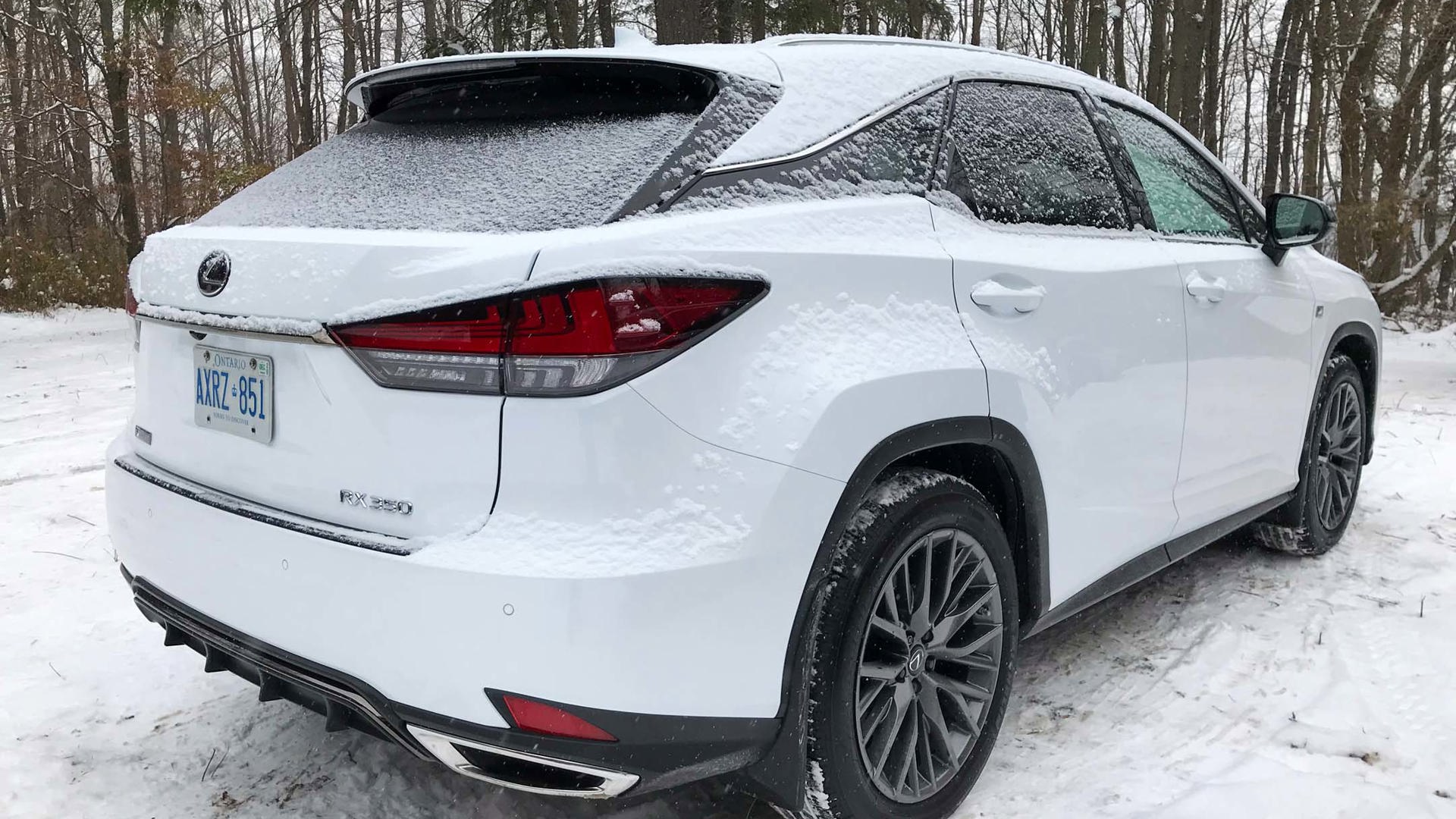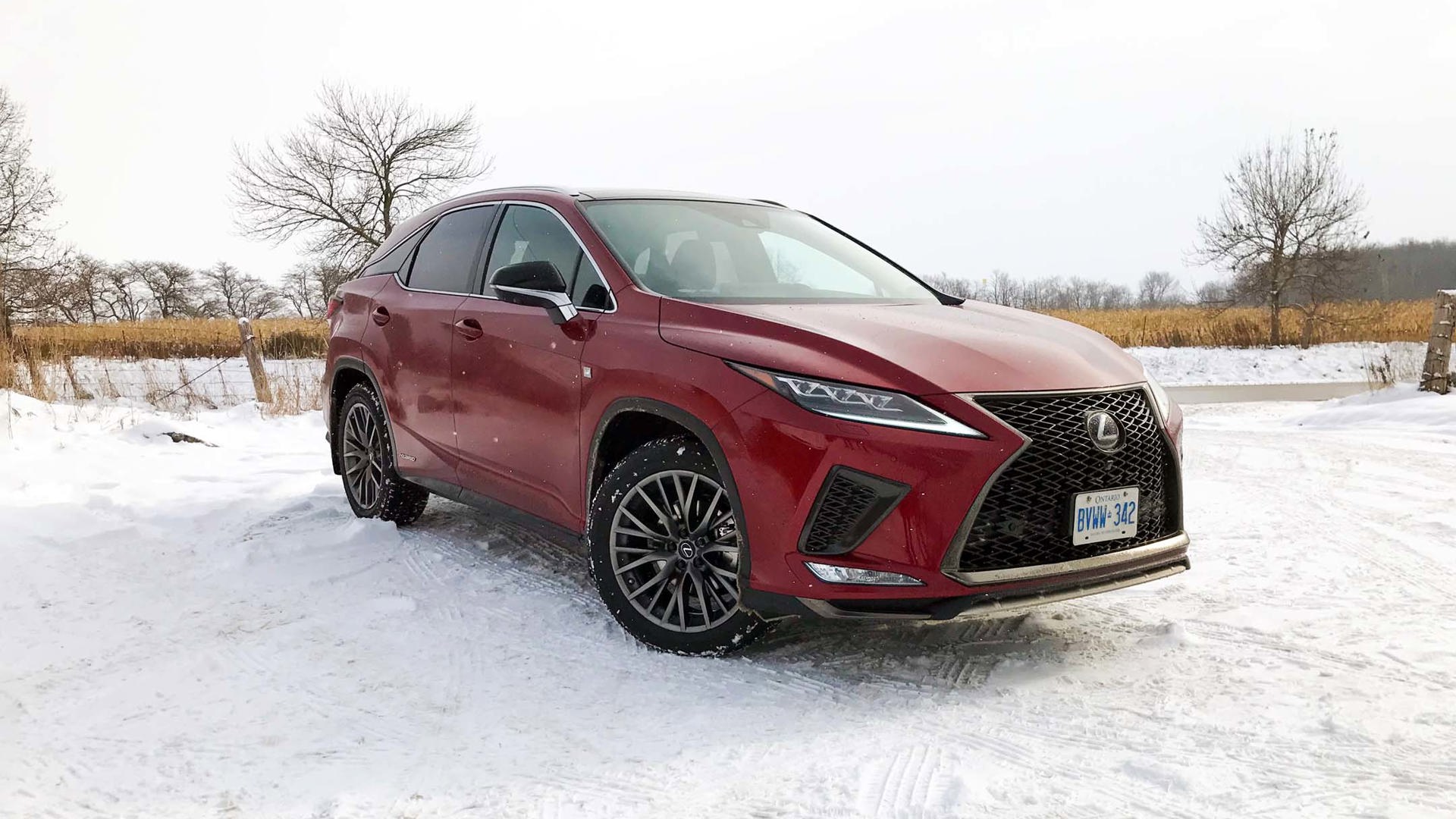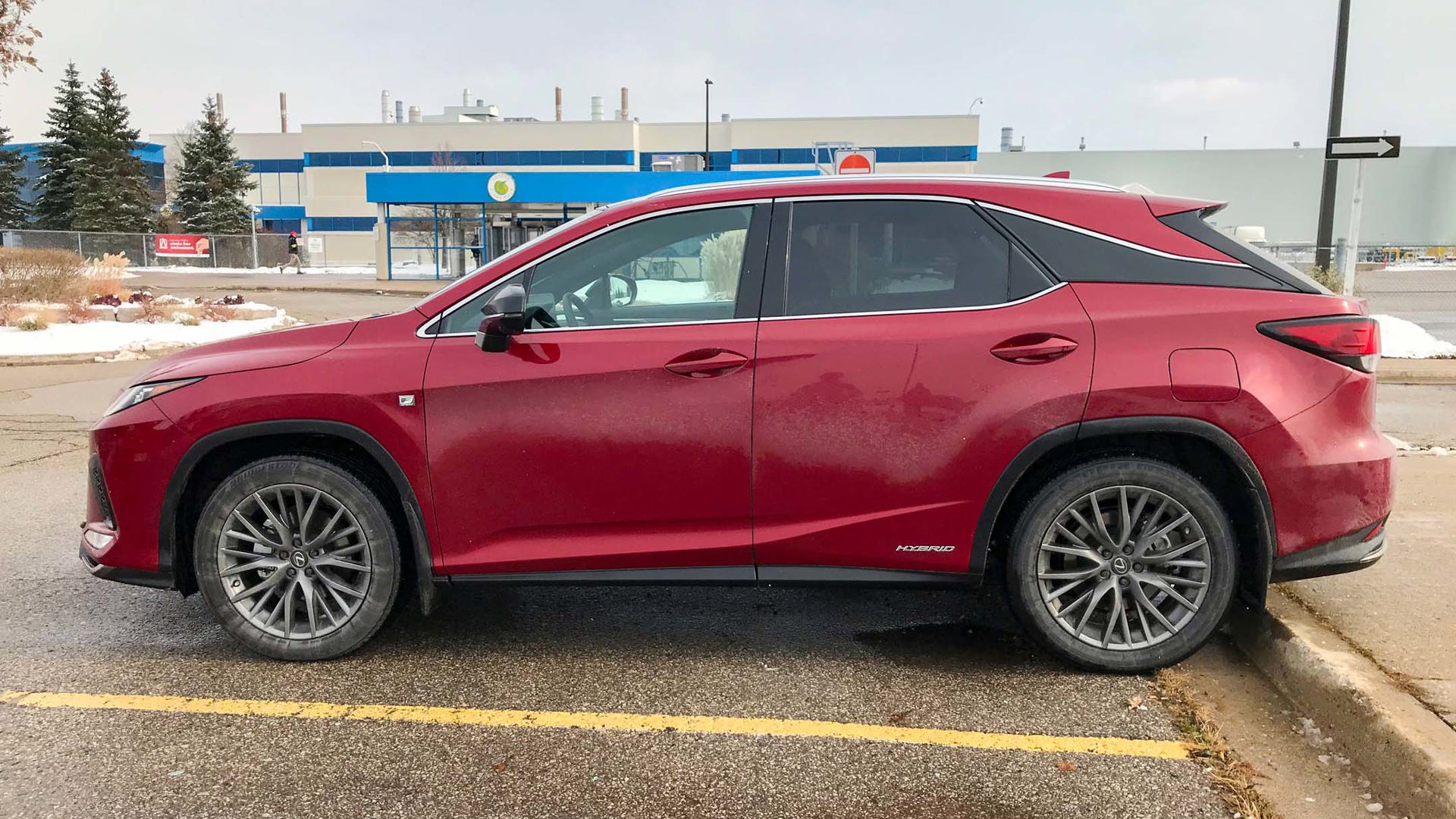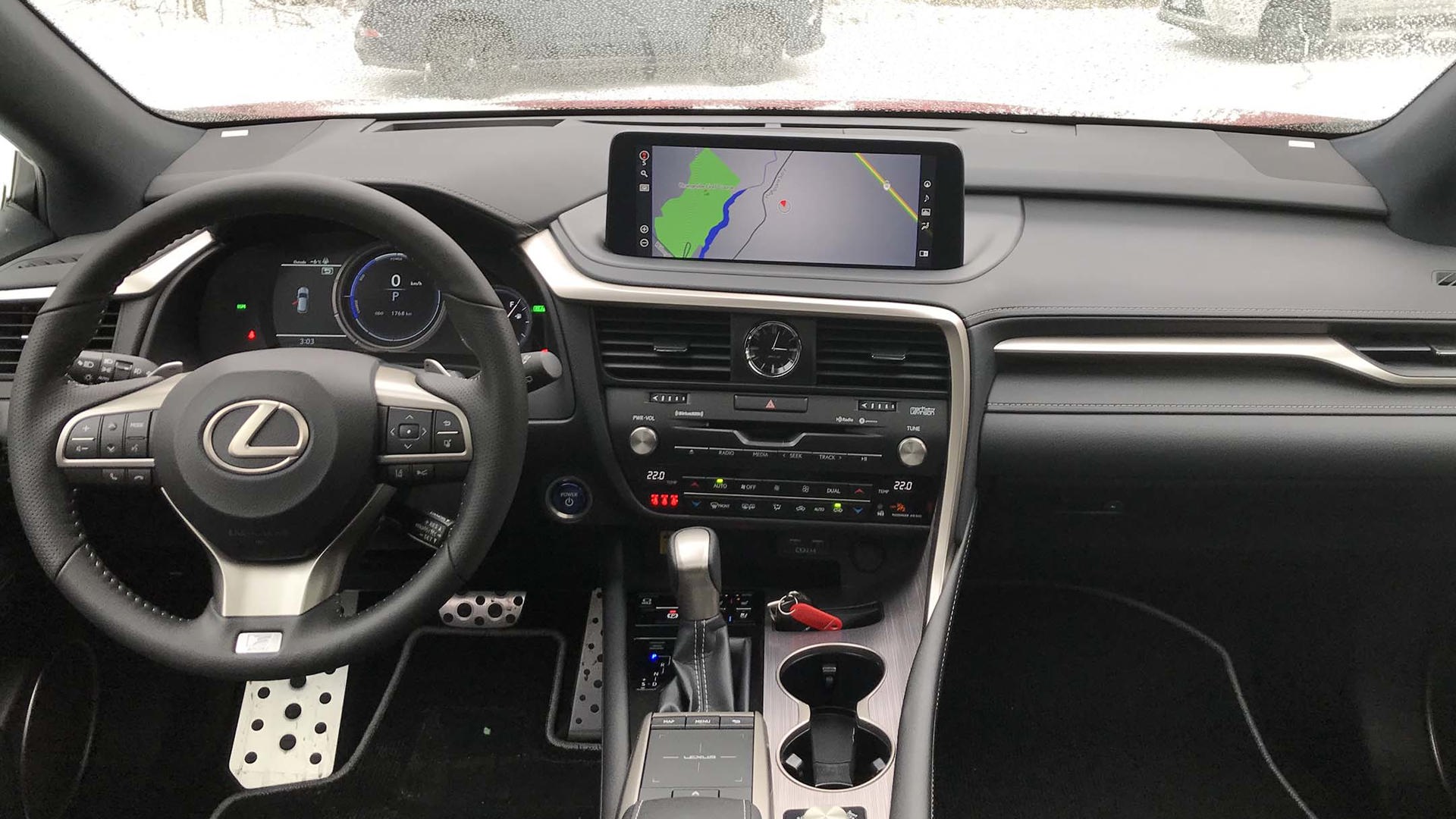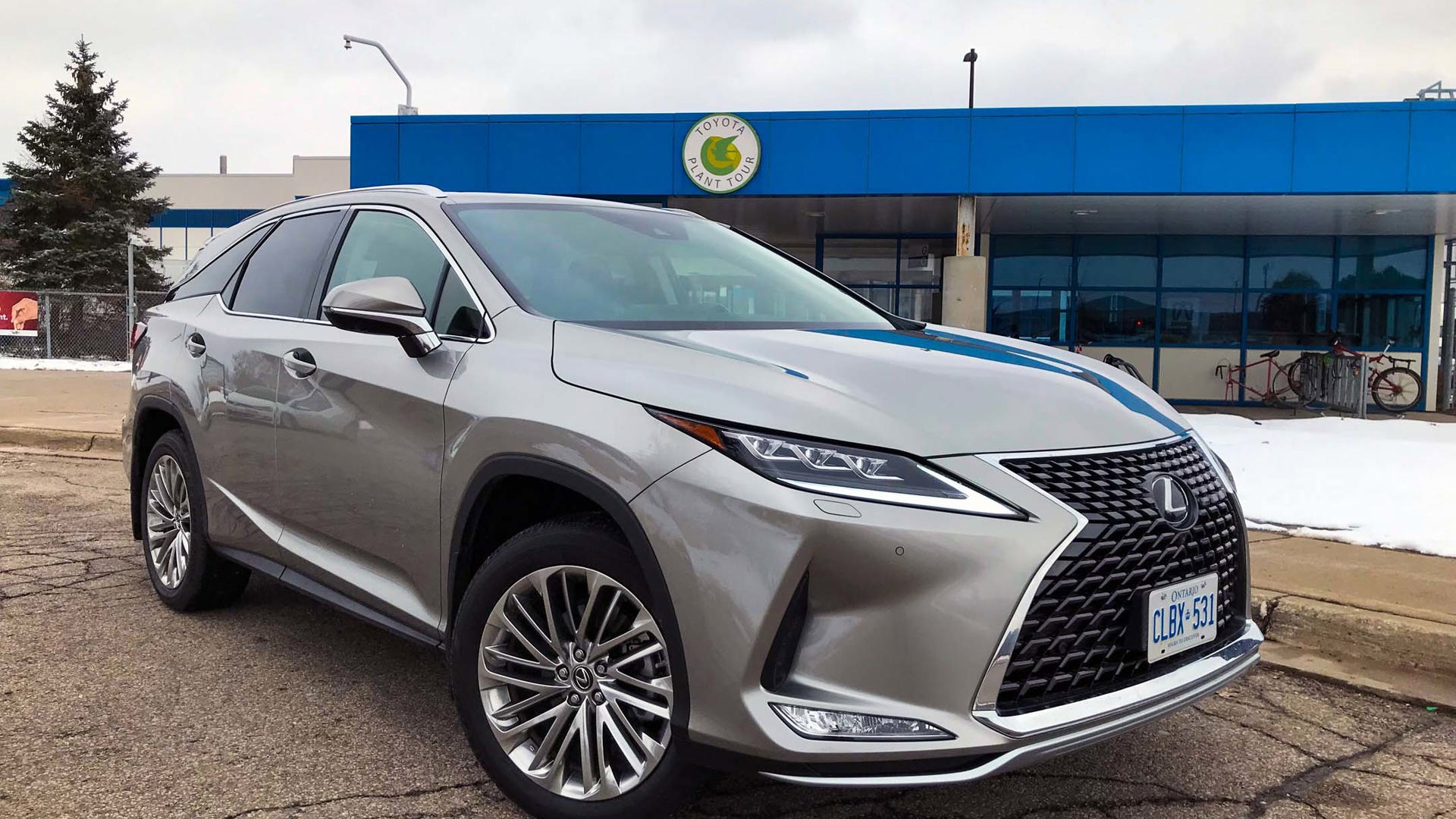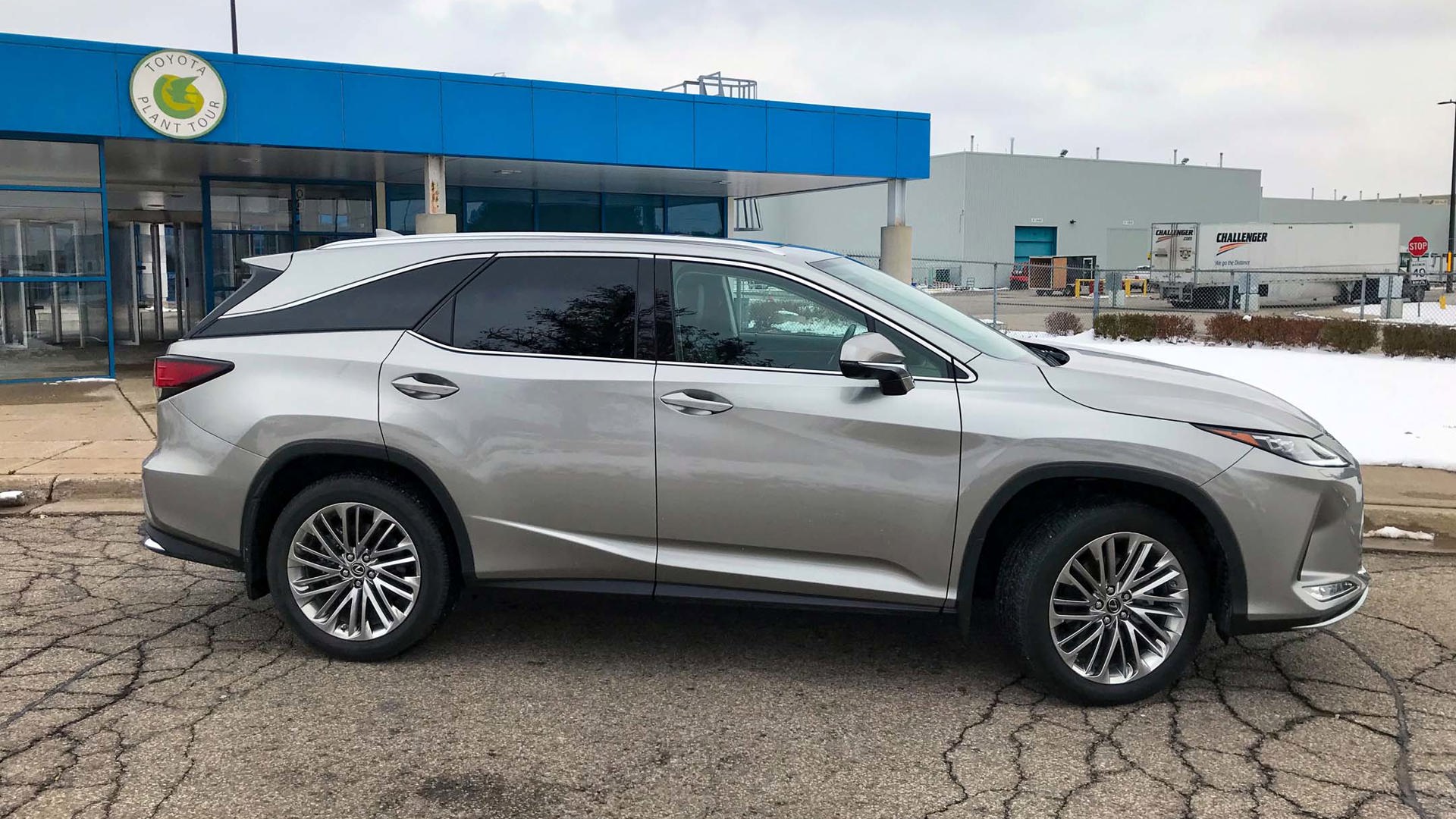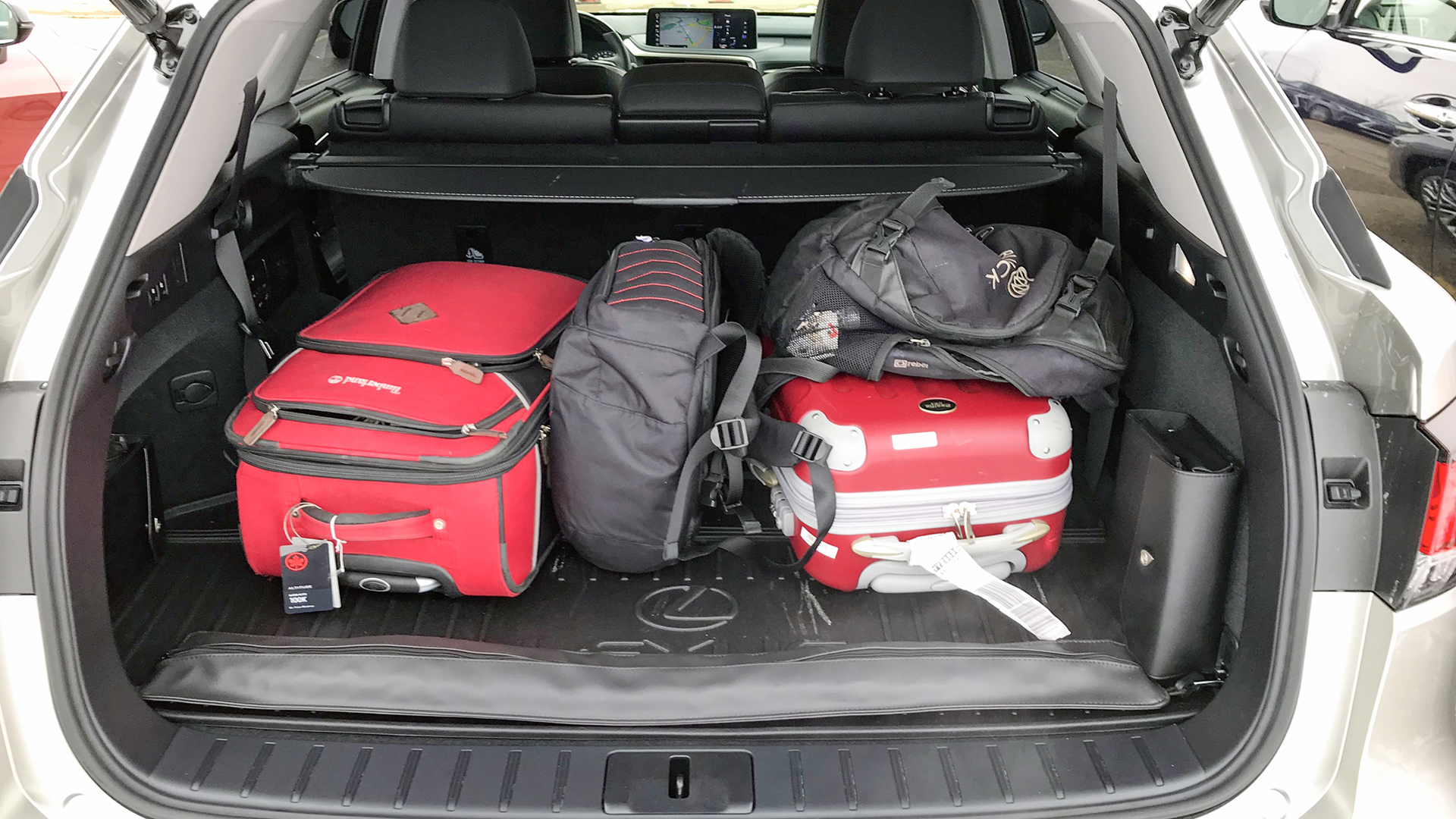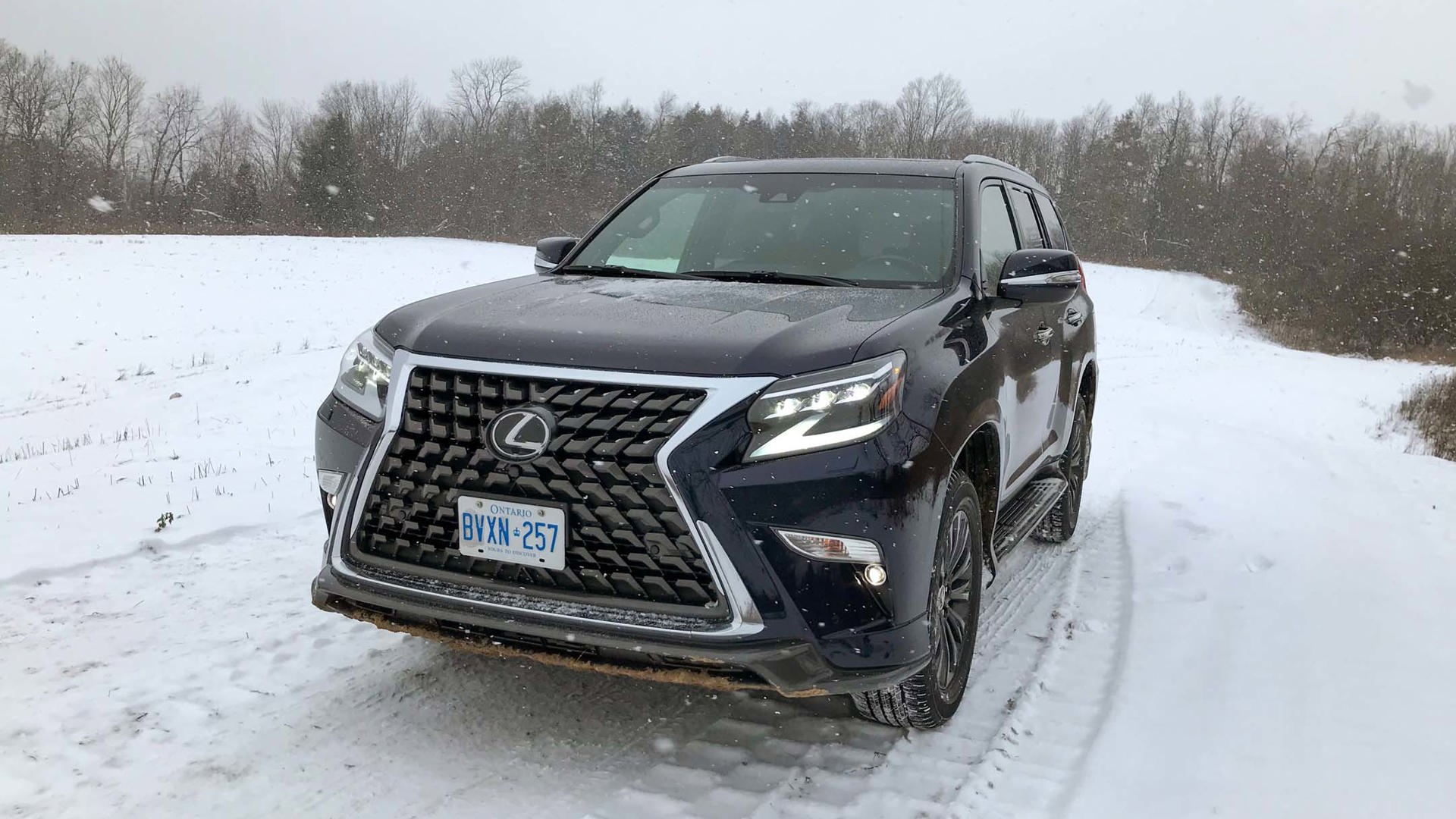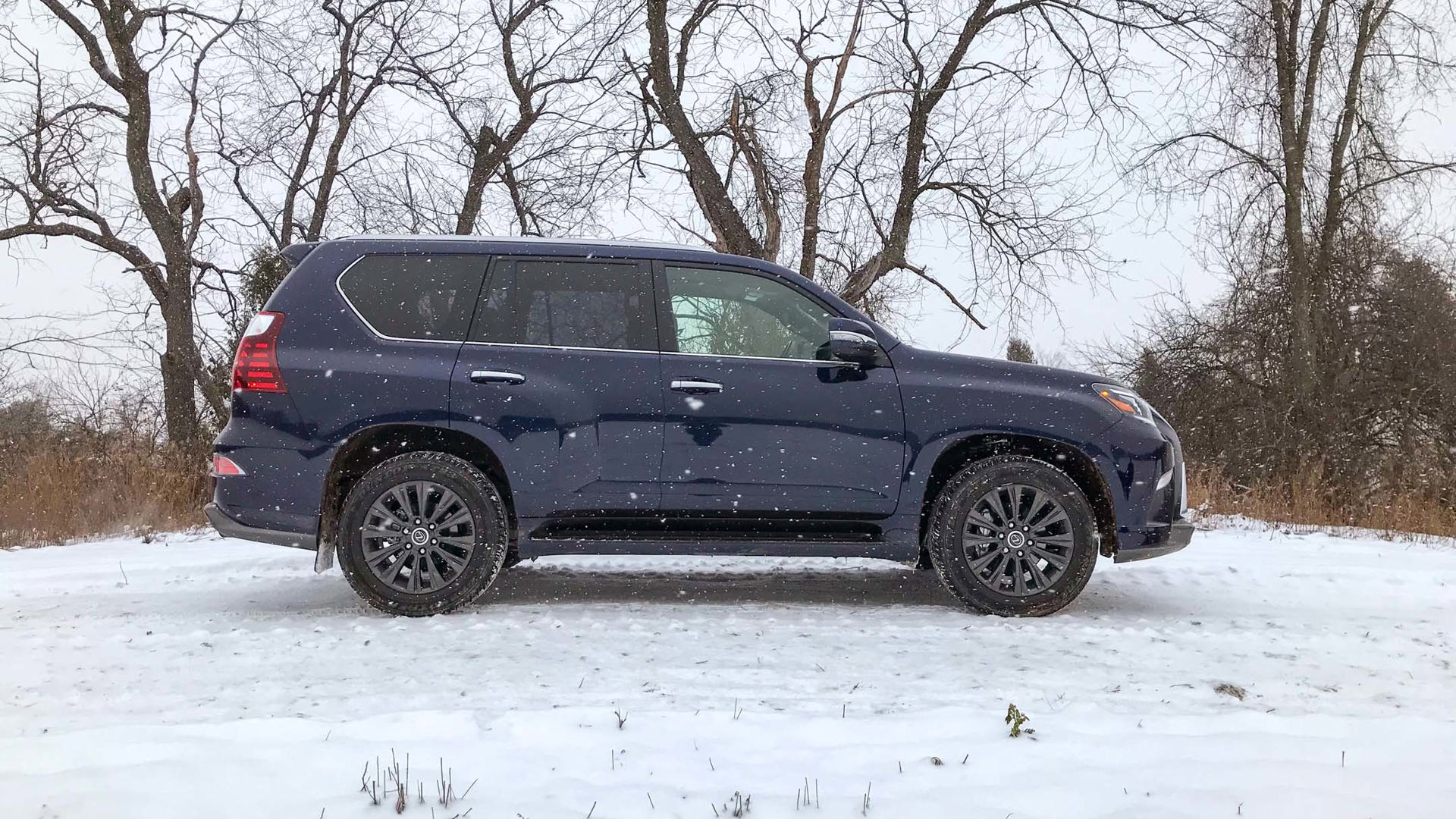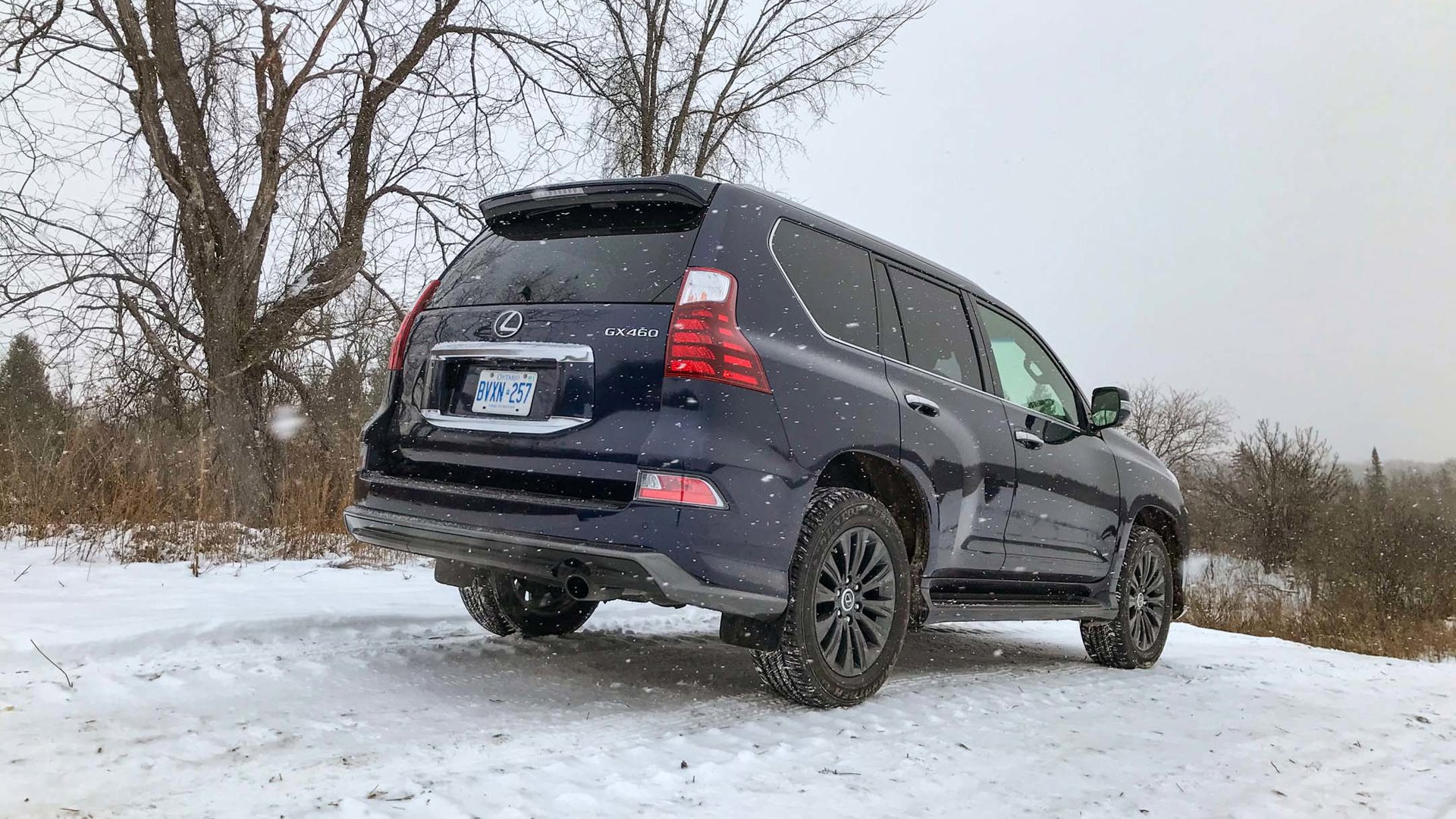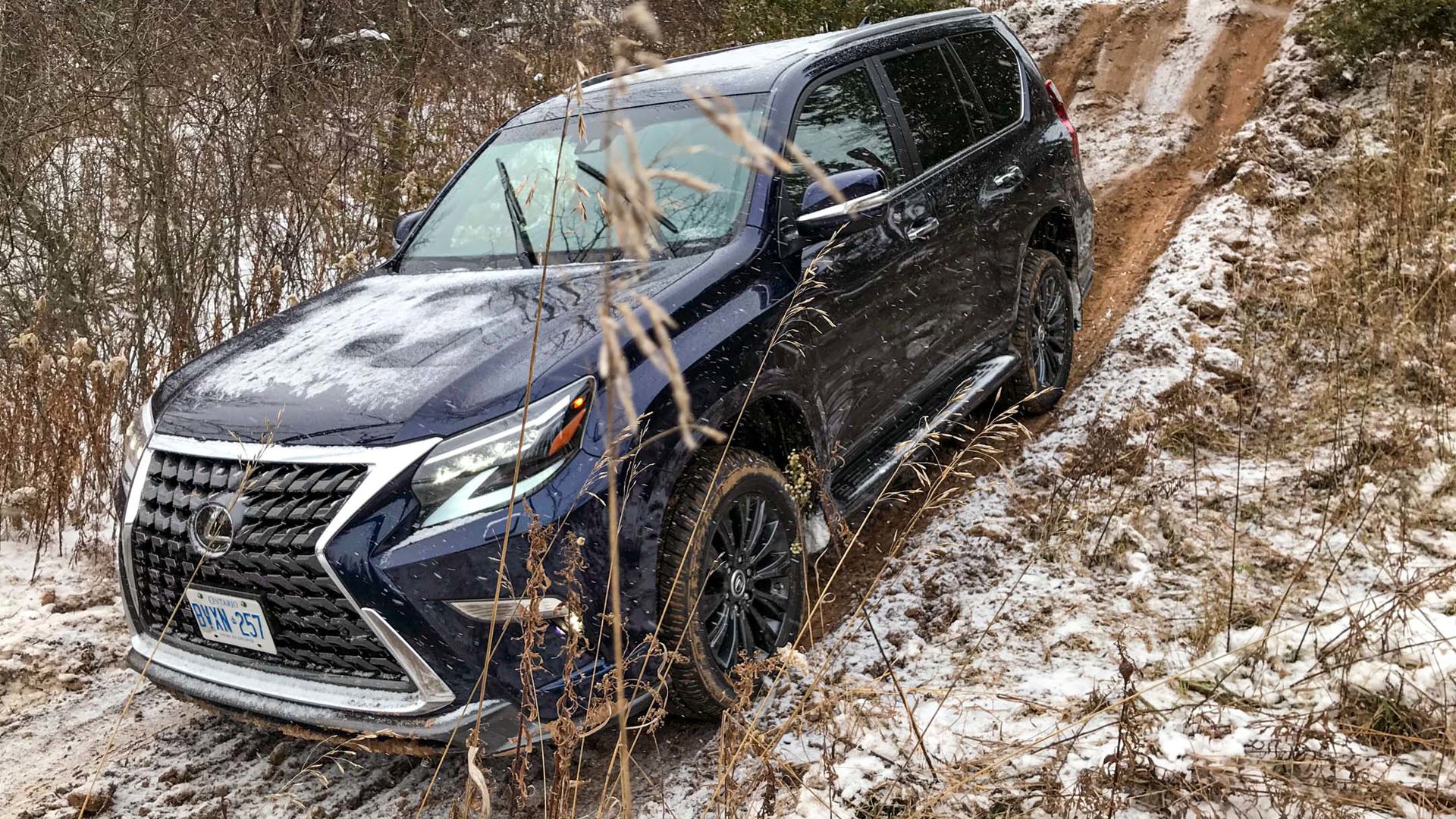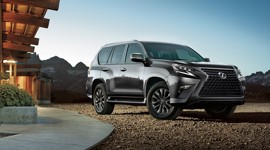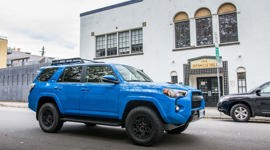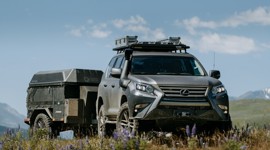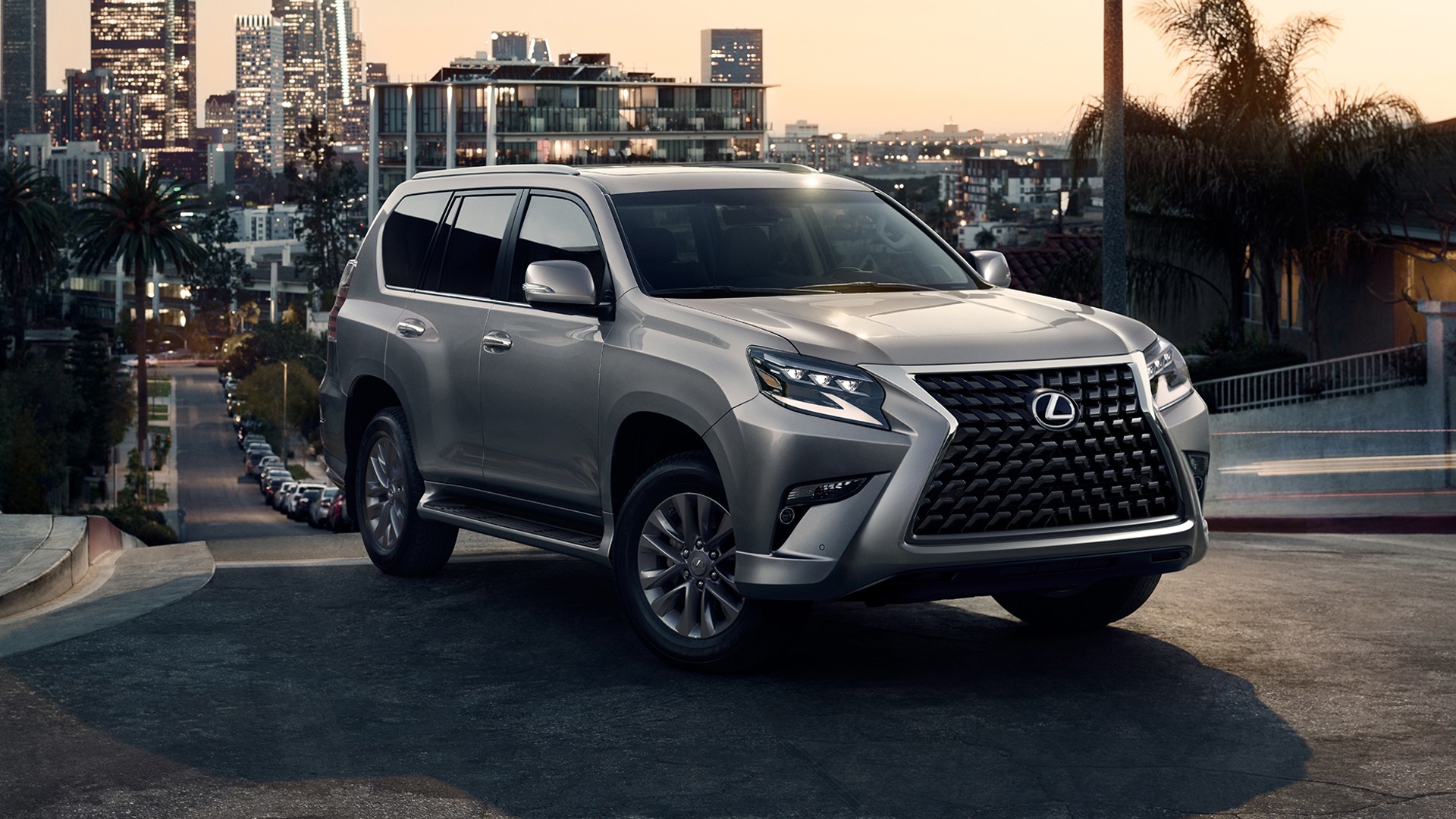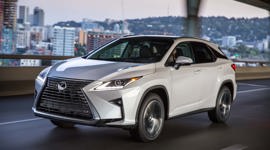Did you know Lexus and parent company Toyota build two of their best-selling vehicles – the Lexus RX and Toyota RAV4 – right here in Canada, at the Toyota Motor Manufacturing Canada (TMMC) plant in Cambridge, Ont.? Fellow autoTRADER.ca contributor Peter Bleakney and I were part of a contingent of journalists invited to tour the plant and sample the full range of 2020 Lexus RX trims. We were also scheduled for an off-road demonstration in the Lexus GX – as it happens, a surprise snowstorm covered the trail in the white stuff and added some Canadian flair to the proceedings.
The real surprise? Seeing first-hand the nearly superhuman training program at TMMC.
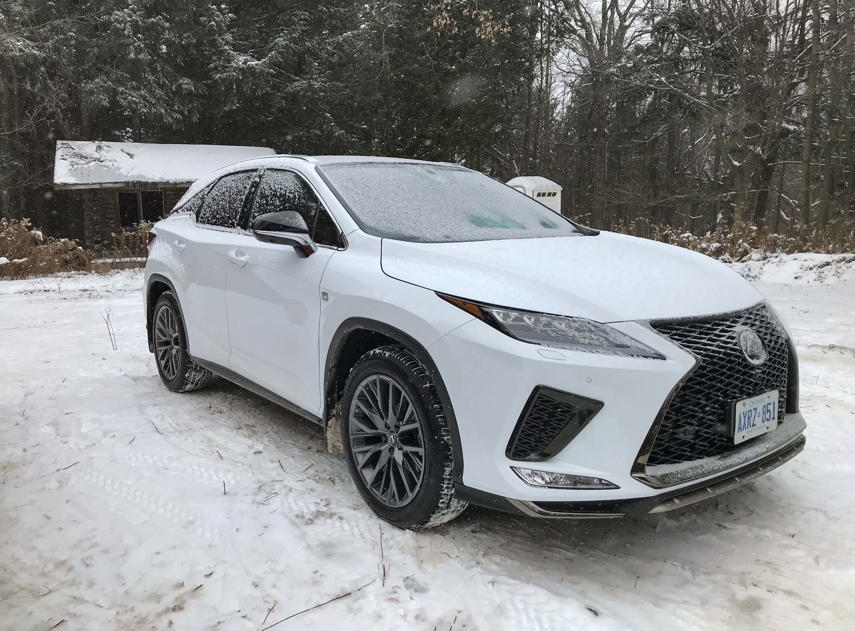
2020 Lexus RX 350 F Sport: New features abound
The RX is perhaps the most famous of the Lexus SUV herd – and more are produced in the TMMC plant than anywhere else in North America. “The RX almost ‘equals’ or ‘means’ Lexus the way the Corolla ‘equals’ Toyota,” opines Lexus Brand Manager Melanie Testani. Now in its fourth generation, the RX launched the luxury SUV category in North America. Several new features make their debut for 2020, while prices of several models have come down.
Walking towards the RX head-on, the first new feature you may notice is the hypnotizing redesign of the front spindle grille, further accentuating that Mae West hourglass figure. Meanwhile, on the RX’s flanks, there are newly repositioned grilles and fog lamps. Flip open the rear gate and you may be disappointed at the amount of cargo space. Note the overnight gear for two drivers swallowing much of the trunk – and that’s the longer-wheelbase RX L. The RX is a sporty crossover and storage is the price.
Speaking of sport, the F Sport upgrade is available for five-seater RX 350 and 450 models, including hybrids. Upon entering, the first thing you’re likely to notice is the flawlessly upholstered leather everything, from seats to steering wheel.
However, the first new features you’ll notice are the 8.0-inch touchscreen and remote touchpad, à la laptop. Both function well, even with my skinny fingers, which are typically ignored by all but the most sensitive of touch technologies.
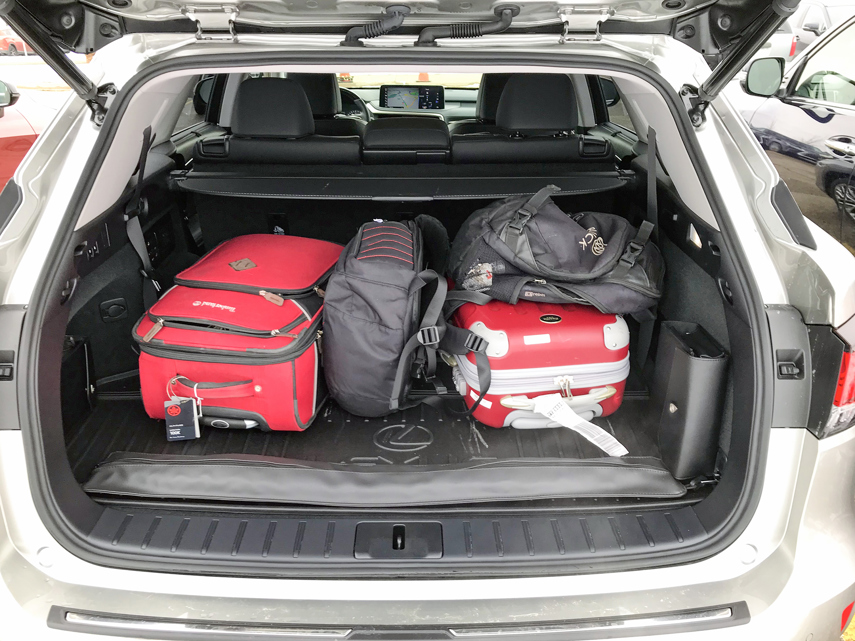
All RX models now provide Apple CarPlay and Android Auto. Combine that with the two extra USB ports in the rear and you’ve almost become cool in your kids’ eyes. That is, until they learn you have master controls that can override any errant attempt to go fast and furious, should they ever borrow it.
In terms of safety, new for 2020, all RX models now come standard with the tricked-out Lexus Safety System Plus 2.0. Highlights include a blind spot monitor, rear cross-traffic alert, and a rear-view camera with back guide monitor. Insightfully, Lexus’s engineers moved the touchscreen five inches closer to the driver. Not everyone is comfortable using the remote pad and the option to interact with the screen directly is very welcome.
The first drive leg lasted about 1.5 hours. We zig-zagged across the hilly-dippy spine of the Niagara escarpment where we nearly had occasion to test the fog lamps’ effectiveness on a couple of deeper plunges. Then, we suddenly found ourselves amidst trees, rugged dirt tracks, and, hidden amid a couple of elevated airy fields, a decent cliff. Let’s plunge!
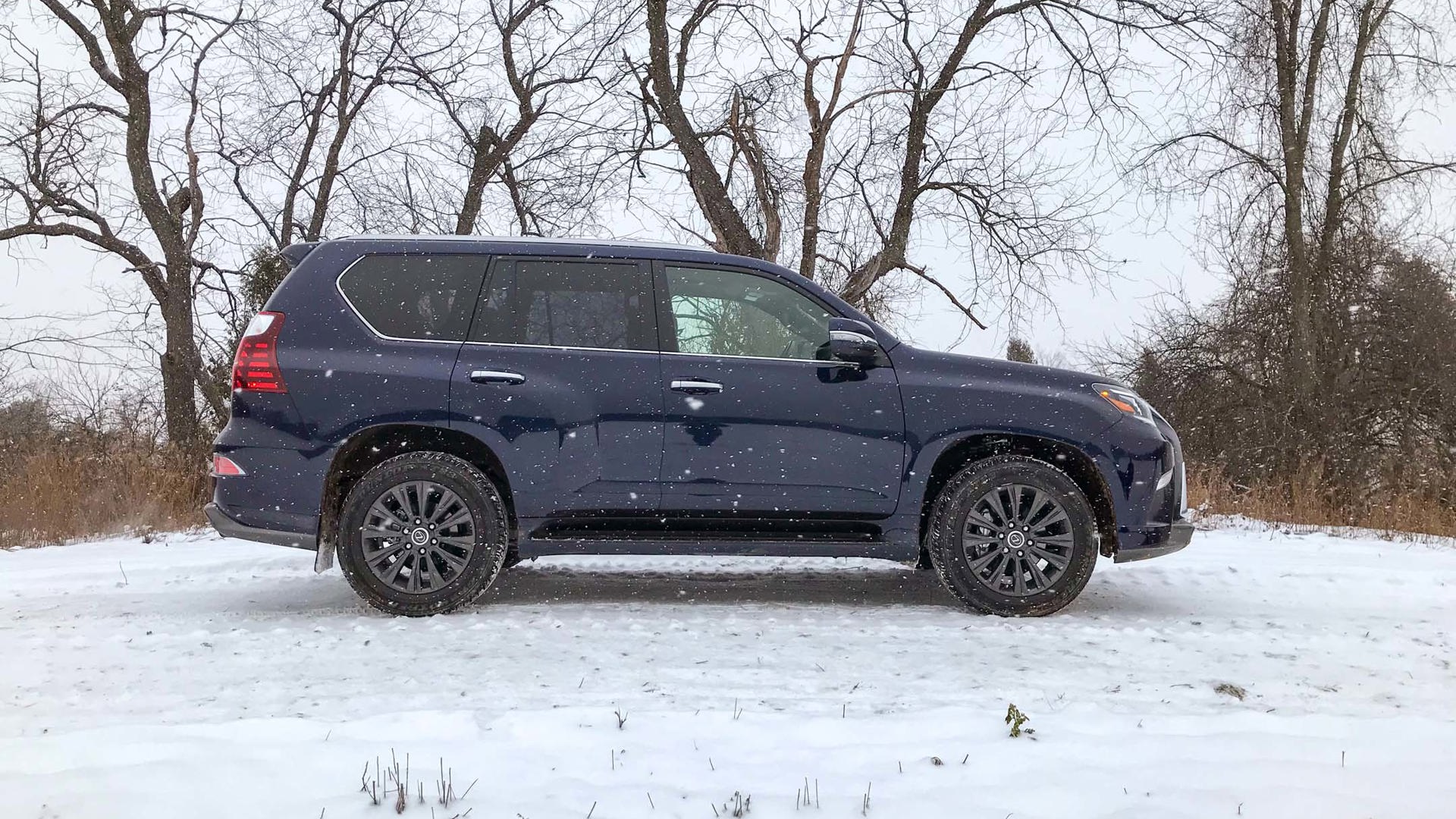
2020 Lexus GX 460: Stealing the show
The Lexus team was excited to demonstrate GX’s new five-speed crawl control. It’s a hill-descent feature that imbues the GX with the incline-descending facility of a yak. (As Lexus’s flagship body-on-frame SUV, the GX already boasts a yak’s girth.)
If you have a superhero’s vision, you’ll notice those aren’t winter tires on the GX. Now over 24 hours into continuous unanticipated snowfall, Peter and I were less excited about the demo than the Lexus team.
Two-dimensional photography never quite translates steep three-dimensional pitch. Sure, you’re welcome to blame the photographer but my skinny waxen fingers were frozen stiff, so what you see is what you get. However, if you were in the driver’s seat, what you would not see is the terrain in front (as in, where you’re going) because it plunges too severely below the GX’s significant prow.
No problem! Once you’ve activated the give-speed crawl control (and wisely selected the lowest speed) all you need to do is steer, because the GX will gradually ease you down the quadruple-black-diamond descent.
And all you need to steer is see where you’re going!
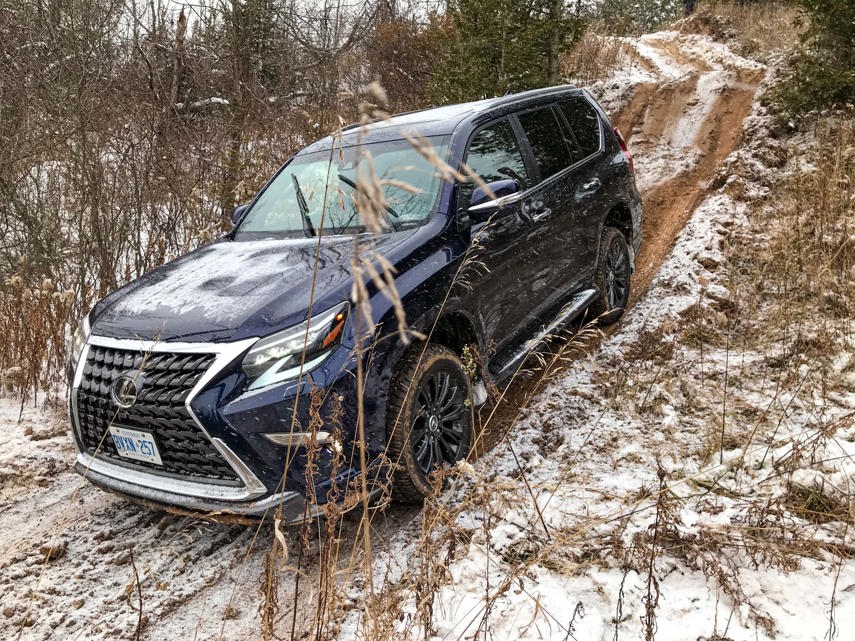
Enter the multi-terrain monitor. It shows you what’s ahead, now hidden beneath the front wheels. “Steer into the tracks,” advised the professional driver on hand, as I threatened to denude a swath of evergreens flanking the rough trail. The camera had some mud and slush but the drop down to the left was visible.
I steered into the tracks. This crawl control tech did the rest. Like a village of Sherpas descending Everest, it gradually lowered tons of metal, glass, plastic, leather, and human cargo coddled in luxury and electronics (after we’d taken the obligatory selfies at the summit).
“You’d never try this on your own!” observed Peter of these off-roading demos so common to capable SUVs like the GX. “Yes,” I agreed, adrenaline coursing through my veins, warming my waxen fingers.
Let’s be honest: Few GX owners scale perpendicular mudslides on their way to Starbucks or their kid’s ballet lessons. But here’s a sign of how important this customer is in the extremely competitive luxury SUV market: The 2020 GX 460’s premium package trim includes these enhanced off-roading features for $1,600 less than what our Lexus hosts called the “closest equivalent 2019 model, the GX with Technology Package.”
2020 Lexus RX 450 Hybrid F Sport: Electrifying sales
Not only was the RX the first luxury SUV, it was also the first hybrid. With so many versions of hybridity on the market – “‘Do I need to plug it in?’ is the first question we get,” says Testani – we all could use some jargon-free shorthand to quell the many range anxieties. “We find calling them ‘self-charging’ explains itself.”
Knowing your batteries charges itself and that you never have to plug it in brings the electro-curious through the doors. Dropping the price on them this year is getting them to sign. According to a recent Lexus press release, “The self-charging hybrid 2020 Lexus RX 450h (starting MSRP: $58,800) is priced $5,700 less than its equivalent 2019 model, bringing it within $2,750 of its conventionally powered RX 350 cousin.”
Small wonder 15 per cent of total Lexus sales this year are hybrids, up from just 5 per cent last year. (Mind, impressive as that sounds, sales of the UX, the smallest and most city-friendly Lexus crossover, are 94 per cent hybrids.) By narrowing the price gap between the conventional RXs and their “self-charging” hybrids, Testani highlights a “faster payback for choosing hybrids and a greater long-term payback.”
Behind the wheel? The RX 450h F Sport we drove to the Cambridge plant tour felt great. The torque at low speeds and rip-snorting acceleration in sport mode were payback themselves.
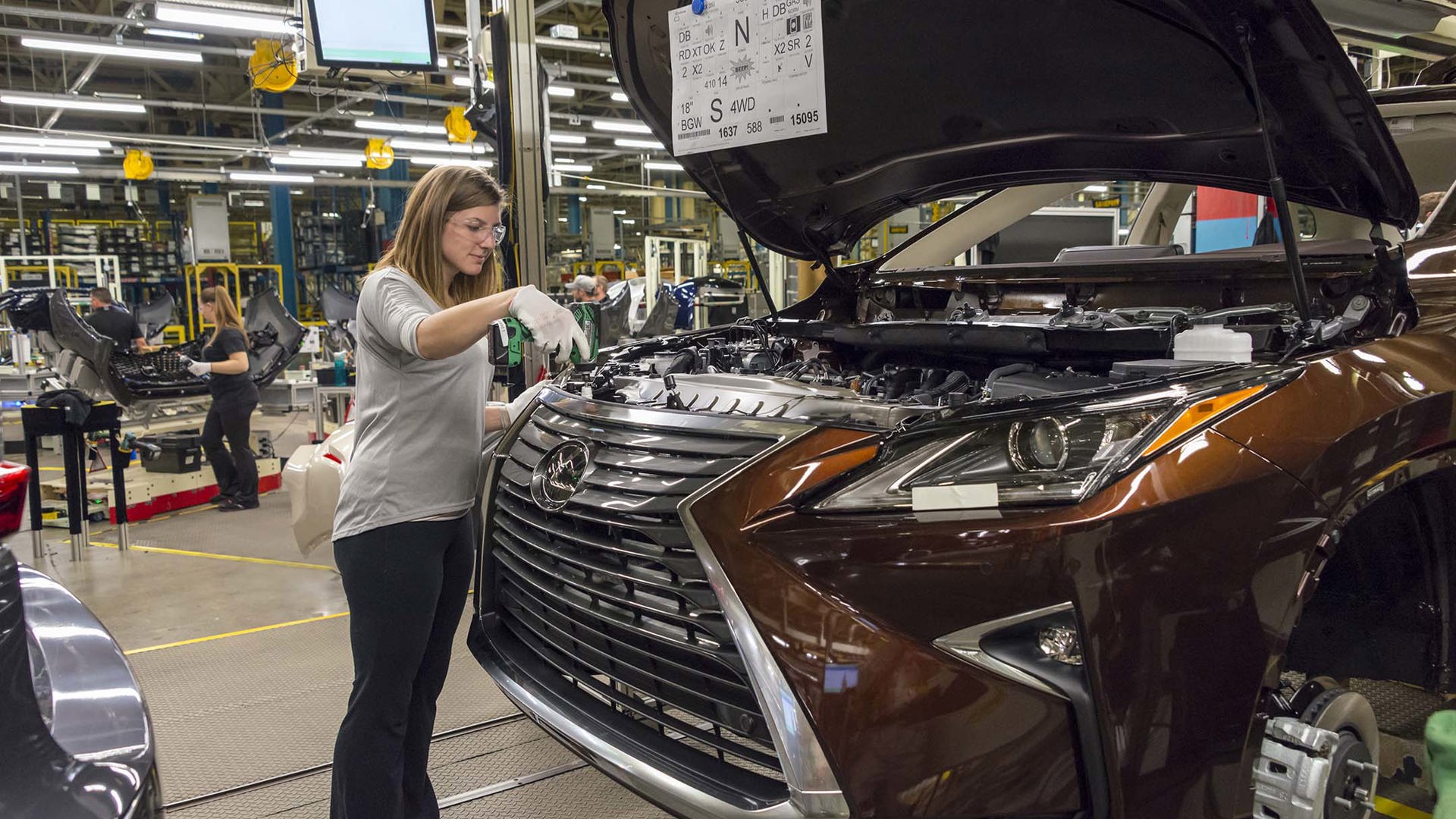
TMMC: Meticulous? That’s just the beginning.
Before we got to tour the plant, we were given a presentation of what to look for. Good thing, that. The tour itself was severely restricted by TMMC’s rigorous safety code. Even new employees are trained to exacting standards before being allowed near any products.
Examples? To master dexterity with their non-dominant hand, new team members must learn to fold, one-handed of course, an origami cat that looks like Pikachu and Hello Kitty’s lovechild. They have 90 seconds to complete the task.
They also must hone their sense of touch to notice defects in a freshly stamped metal panel within 0.3 millimetres’ difference. That’s “about three sheets of paper thick,” explained General Manager of Lexus Manufacturing, Steve MacNeil. Moreover, they get only four seconds to notice and highlight said flaws.
Indeed, before they even can get onto plant floor to play in the big leagues, team members need to train for 1,000 hours – that’s six months! – in the training “dojos” to attain their “purple belt.” And they’re regularly tested on such demanding skills until they attain the black belt level (they also call it takumi, roughly translating to “artisan,” although black belt sounds more badass) which equals 60,000 hours – 30 years of work – at which point they can teach the skills themselves. Remember: 10,000 hours is Malcolm Gladwell’s standard for expertise. Lexus black belts have practiced 600 per cent more!
Bottom line? There was zero chance any of us on the tour would be let near their stamping machines to mug for photographs. We’d been anticipating a full Stephen King smorgasbord of danger but got the exact opposite. Indeed, we knew something was up when Toyota Canada’s Senior National Manager Scott MacKenzie warned us during lunch that “people have fallen asleep on this tour before. So, keep your body completely contained on the train.”
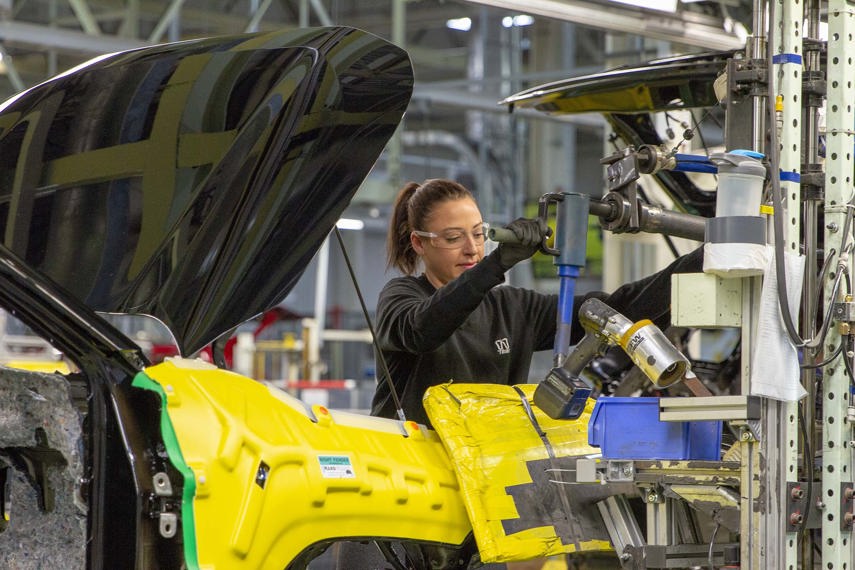
Train? After a soporific lunch, we were packed onto an extended electric people mover (imagine if a rollercoaster car and one of those golf-carts ferrying people around airports had a baby) then instructed to don safety glasses and noise-cancelling headphones. MacKenzie somnolently read a script describing the procedures while Testani drove. Phones and cameras weren’t allowed. We were even banned from having loose items like pens and notebooks out. So thoughts and impressions proved a challenge to retain, especially if you’ve spent almost none of your life in (or thinking about) a manufacturing plant.
So what thoughts remained? The place is huge – 3.5 million square feet – and the impression that vastness with all its many comings and goings-on was like the door factory in Monsters Inc. However, the simple and distinct tunes that play to indicate a pause in production or safety alert were more neighbourhood ice cream truck than the blaring klaxons of an animated film.
Impressions? So much obvious opportunity for horrible accidents. It was topped only by Toyota Canada’s slavish devotion to safety practices. No wonder employees spend thousands of hours learning skills – the plant’s processes include over 4,800 individual quality checks – and thousands more learning and relearning safety practices conducted on the floor.
The spaghetti serving of production lines and adjoining rooms was discombobulating and it’s easy to see why some riders would shut down on the information overload.
JD Power award banners acknowledging corporate, factory, and product excellence hung from the rafters like a storied sports franchise. Other banners declared company philosophies all over. The most prominent? Their three-step doctrine, which they repeat like a prayer: 1) Mindset – the culture teams adopt; 2) Skill set – 1,000 and 60,000 hours’ training; and 3) Process Capability – the results of these.
We lucky tourists only had to practice sitting in our seat – for just one hour.
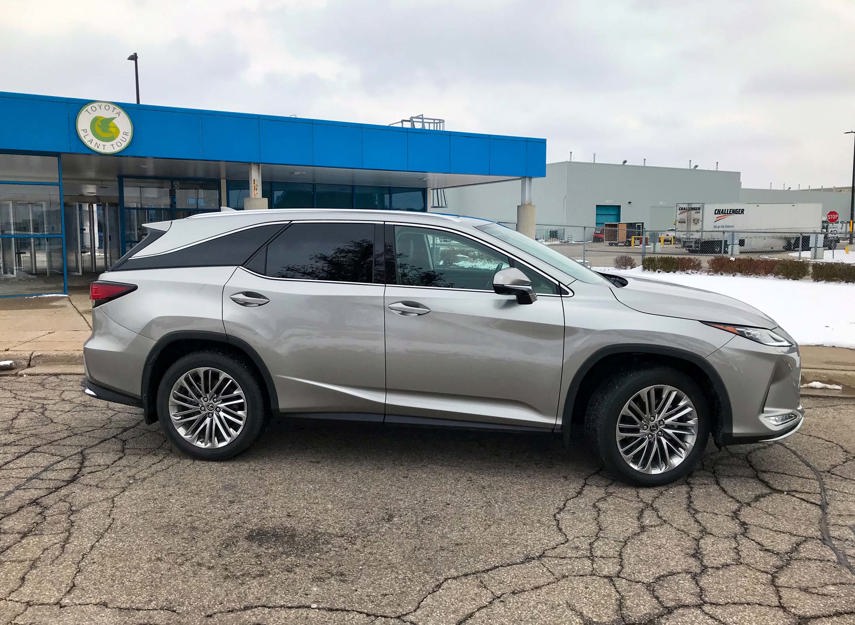
2020 Lexus RX 350 L: For the journey home.
It’s been a long and intense 26 hours since this adventure began. Our final ride from TMMC to the hotel at Toronto’s Pearson airport where we began is about 80 km and passed in the three-row-capable RX 350 L. With just 112 mm (4.4 in) of additional length, there’s not a lot of storage in the RX, even with the third row folded and cached.
According to the navigation system, we should arrive at 3:32 pm, about a 90-minute drive. Twice, a robotic female voice correctly announces that ugly traffic’s about to interrupt our journey on Ontario’s notoriously awful Highway 401. Nonetheless, Peter gets us there at 3:31. “Ha! A minute off,” we chime in unison, declaring our triumph over our computer overlords. Then the clock changes to 3:32 before we actually arrive at the hotel door.
Impressive.
